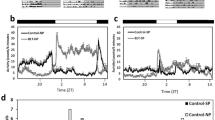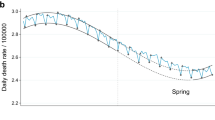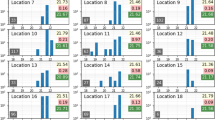Abstract
Background:
Worldwide overweight and obesity rates are on the rise, with about 1 900 billion adults being defined as overweight and about 600 million adults being defined as obese by the World Health Organization (WHO). Increasing exposure to artificial light-at-night (ALAN) may influence body mass, by suppression of melatonin production and disruption of daily rhythms, resulting in physiological or behavioral changes in the human body, and may thus become a driving force behind worldwide overweight and obesity pandemic.
Methods:
We analyzed most recent satellite images of night time illumination, available from the US Defense Meteorological Satellite Program (DMSP), combining them with country-level data on female and male overweight and obesity prevalence rates, reported by the WHO. The study aims to identify and measure the strength of association between ALAN and country-wide overweight and obesity rates, controlling for per capita GDP, level of urbanization, birth rate, food consumption and regional differences.
Results:
ALAN emerged as a statistically significant and positive predictor of overweight and obesity (t>1.97; P<0.05), helping to explain, together with other factors, about 70% of the observed variation of overweight and obesity prevalence rates among females and males in more than 80 countries worldwide. Regional differences in the strength of association between ALAN and excessive body mass are also noted.
Conclusions:
This study is the first population-level study that confirms the results of laboratory research and cohort studies in which ALAN was found to be a contributing factor to excessive body mass in humans.
This is a preview of subscription content, access via your institution
Access options
Subscribe to this journal
Receive 12 print issues and online access
$259.00 per year
only $21.58 per issue
Buy this article
- Purchase on Springer Link
- Instant access to full article PDF
Prices may be subject to local taxes which are calculated during checkout




Similar content being viewed by others
References
World Health Organization (WHO). Obesity and overweight: fact sheets, 2015. Available from http://www.who.int/mediacentre/factsheets/fs311/en/ (accessed 22 February 2015).
Centers for Disease Control and Prevention (CDC). Overweight and obesity: causes and consequences, 2015. Available from http://www.cdc.gov/obesity/adult/causes/index.html (accessed 24 February 2015).
National Heart, Lung and Blood Institute (NHLBI). What are the health risks of overweight and obesity? 2015. Available from http://www.nhlbi.nih.gov/health/health-topics/topics/obe/risks (accessed 24 February 2015).
Kark M, Rasmussen F . Growing social inequalities in the occurrence of overweight and obesity among young men in Sweden. Scand J Public Health 2005; 33: 472–477.
Miech RA, Kumanyika SK, Settler N, Link BG, Phelan JC, Chang VW . Trends in the association of poverty with overweight among US adolescents, 1971–2004. JAMA 2006; 295: 2385–2393.
Meydan C, Afek A, Derazne E, Tzur D, Twig G, Gordon B et al. Population-based trends in overweight and obesity: a comparative study of 2148342 Israeli male and female adolescents born 1950–1993. Pediatr Obes 2012; 8: 98–111.
Jerrett M, McConnell R, Wolch J, Chang R, Lam C, Dunton G et al. Traffic-related air pollution and obesity formation in children: a longitudinal, multilevel analysis. Environ Health 2014; 13: 49.
Sobal J, Stunkard AJ . Socioeconomic status and obesity: a review of the literature. Psychol Bull 1989; 105: 260–275.
McLaren L . Socioeconomic status and obesity. Epidemiol Rev 2007; 29: 29–48.
Ziraba AK, Fotso JC, Ochako R . Overweight and obesity in urban Africa: a problem of the rich or the poor? BMC Public Health 2009; 9: 465.
Amaral S, Monteiro V, Camara G, Quintanilha JA . DMSP/OLS night-time light imagery for urban population estimates in the Brazilian Amazon. Int J Remote Sens 2006; 27: 855–870.
Henderson JV, Storeygard A, Weil DN . Measuring economic growth from outer space. Am Econ Rev 2009; 102: 994–1028.
Martin JS, Hébert M, Ledoux E, Gaudreault M, Laberge L . Relationship of chronotype to sleep, light exposure, and work-related fatigue in student workers. Chronobiol Int 2012; 29: 295–304.
Obayashi K, Saeki K, Iwamoto J, Okamoto N, Tomioka K, Nezu S et al. Effect of exposure to evening light on sleep initiation in the elderly: a longitudinal analysis for repeated measurements in home settings. Chronobiol Int 2014; 31: 461–467.
Daurat A, Foret J, Benoit O, Mauco G . Bright light during nighttime: effects on the circadian regulation of alertness and performance. Biol Signals Recept 2000; 9: 309–318.
Chang AM, Scheer FA, Czeisler CA, Aeschbach D . Direct effects of light on alertness, vigilance, and the waking electroencephalogram in humans depend on prior light history. Sleep 2013; 36: 1239–1246.
Wallace‐Guy GM, Kripke DF, Jean‐Louis G, Langer RD, Elliott JA, Tuunainen A . Evening light exposure: Implications for sleep and depression. J Am Geriatr Soc 2002; 50: 738–739.
Obayashi K, Saeki K, Iwamoto J, Ikadab Y, Kurumatania N . Exposure to light at night and risk of depression in the elderly. J Affect Disord 2013; 151: 331–336.
Haim A, Portnov BA . Light Pollution as a New Risk Factor for Human Breast and Prostate Cancers. Springer: Dordrecht, Heidelberg, New York, London, 2013.
Hurley S, Goldberg D, Nelson D, Hertz A, Horn-Ross PL, Bernshtein L et al. Light at night and breast cancer risk among California teachers. Epidemiology 2014; 25: 697–706.
Bauer SE, Wagner SE, Burch J, Bayakly R, Vena JE . A case-referent study: light at night and breast cancer risk in Georgia. Int J Health Geogr 2013; 12: 23.
Schernhammer ES, Laden F, Speizer FE, Willett WC, Hunter DJ, Kawachi I et al. Night-shift work and risk of colorectal cancer in the nurses’ health study. J Natl Cancer Inst 2003; 95: 825–828.
Reiter RJ, Tan DX, Korkmaz A, Erren TC, Piekarski C, Tamura H et al. Light at night, chronodisruption, melatonin suppression, and cancer risk: a review. Crit Rev Oncog 2007; 13: 303–328.
Hoffmann K . Photoperiodic effects in the Djungarian hamster: one minute of light during darktime mimics influence of long photoperiods on testicular recrudescence, body weight and pelage colour. Experientia 1979; 35: 1529–1530.
Arble DM, Bass J, Laposky AD, Vitaterna MH, Turek FW . Circadian timing of food intake contributes to weight gain. Obesity 2009; 17: 2100–2102.
Salgado-Delgado R, Angeles-Castellanos M, Saderi N, Buijs RM, Escobar C . Food intake during the normal activity phase prevents obesity and circadian desynchrony in a rat model of night work. Endocrinology 2010; 151: 1019–1029.
Fonken LK, Workman JL, Waltona JC, Weil ZM, Morris JS, Haim et al. Light at night increases body mass by shifting the time of food intake. PNAS 2010; 107: 18664–18669.
Ma Y, Bertone ER, Stanek EJ, Reed GW, Hebert JR, Cohen NL et al. Association between eating patterns and obesity in a free-living US adult population. Am J Epidemiol 2003; 158: 85–92.
Colles SL, Dixon JB, O’Brien PE . Night eating syndrome and nocturnal snacking: association with obesity, binge eating and psychological distress. Int J Obes (Lond) 2007; 31: 1722–1730.
Obayashi K, Saeki K, Iwamoto J, Okamoto N, Tomioka K, Nezu S et al. Exposure to light at night, nocturnal urinary melatonin excretion, and obesity/dyslipidemia in the elderly: a cross-sectional analysis of the HEIJO-KYO Study. J Clin Endocrinol Metab 2012; 98: 337–344.
McFadden E, Jones ME, Schoemaker MJ, Ashworth A, Swerdlow AJ . The relationship between obesity and exposure to light at night: cross-sectional analyses of over 100,000 women in the Breakthrough Generations Study. Am J Epidemiol 2014; 180: 245–250.
Kennaway DJ, Voultsios A, Varcoe TJ, Moyer RW . Melatonin in mice: Rhythms, response to light, adrenergic stimulation, and metabolism. Am J Physiol Regul Integr Comp Physiol 2002; 282: R358–R365.
Korkmaz A, Topal T, Tan DX, Reiter RJ . Role of melatonin in metabolic regulation. Rev Endocr Metab Disord 2009; 10: 261–270.
Kooijman S, van den Berg R, Ramkisoensing A, Boon MR, Kuipers EN, Loef M et al. Prolonged daily light exposure increases body fat mass through attenuation of brown adipose tissue activity. Proc Natl Acad Sci USA 2015; 112: 6748–6753.
Laposky AD, Bass J, Kohsaka A, Turek FW . Sleep and circadian rhythms: key components in the regulation of energy metabolism. FEBS Lett 2008; 582: 142–151.
Spiegel K, Tasali E, Leproult R, Van Cauter E . Effects of poor and short sleep on glucose metabolism and obesity risk. Nat Rev Endocrinol 2009; 5: 253–261.
World Health Organization (WHO). Body mass index database, 2014. Available from http://apps.who.int/bmi/index.jsp (accessed 15 December 2014).
European Commission (EC). Health effects of artificial light, 2014. Available from http://ec.europa.eu/health/scientific_committees/opinions_layman/artificial-light/en/index.htm (accessed 14 September 2014).
National Oceanic and Atmospheric Administration (NOAA). Global Radiance Calibrated Night-time Lights, 2014. Available from http://ngdc.noaa.gov/eog/dmsp/download_radcal.html (accessed 24 May 2014).
Elvidge C, Baugh K, Zhizhin M, Hsu F . Why VIIRS data are superior to DMSP for mapping night-time lights. Proc Asia Pacific Adv Netw 2013; 35: 62–69.
Internet Geography (IG). Factors affecting population density, 2015. Available from http://www.geography.learnontheinternet.co.uk/topics/popn1.html#factors (accessed 27 May 2015).
Kloog I, Haim A, Stevens R, Portnov B . Global co-distribution of light at night (LAN) and cancers of prostate, colon, and lung in men. Chronobiol Int 2009; 26: 108–125.
Kloog I, Stevens R, Haim A, Portnov B . Nighttime light level co-distributes with breast cancer incidence worldwide. Cancer Causes Control 2010; 21: 2059–2068.
The GeoNames geographical database (GeoNames), 2014. Available from http://download.geonames.org/export/dump/ (accessed 24 May 2014).
United Nations Environment Programme (UNEP), 2014. Overview of the milliennium ecosystem assessment. Available from http://www.unep.org/maweb/en/About.aspx (accessed 13 October 2014).
ArcGIS Resource Center (ARC). Zonal Statistics (Spatial Analyst), 2014. Available from http://resources.arcgis.com/en/help/main/10.2/index.html#//009z000000w7000000 (accessed 5 October 2014).
World Health Organization (WHO). Diet, nutrition and the prevention of chronic diseases. Report of a Joint WHO/FAO Expert Consultation. World Health Organ Tech Rep Ser 2003; 916: i–viii.
Popkin BM . Urbanization, lifestyle changes and the nutrition transition. World Dev 1999; 27: 1905–1916.
Christensen DL, Eis J, Hansen AW, Larsson MW, Mwaniki DL, Kilonzo B et al. Obesity and regional fat distribution in Kenyan populations: Impact of ethnicity and urbanization. Ann Hum Biol 2008; 35: 232–249.
Han X, Naeher LP . A review of traffic-related air pollution exposure assessment studies in the developing world. Environ Int 2006; 32: 106–120.
Bruso J . What are the benefits of eating healthy vs. unhealthy? 2015. Available from http://healthyeating.sfgate.com/benefits-eating-healthy-vs-unhealthy-7680.html (accessed 25 March 2015).
Weng HH, Bastian LA, Taylor DH, Moser BK, Ostbye T . Number of children associated with obesity in middle-aged women and men: results from the health and retirement study. J Womens Health (Larchmt) 2004; 13: 85–91.
Rooney BL, Schauberger CW . Excess pregnancy weight gain and long‐term obesity: one decade later. Obstet Gynecol 2002; 100: 245–252.
The World Bank (WB). Birth rate, crude, 2014. Available from http://data.worldbank.org/indicator/SP.DYN.CBRT.IN (accessed 24 May 2014).
The World Bank (WB). GDP per capita, 2014a. Available from http://data.worldbank.org/indicator/NY.GDP.PCAP.CD (accessed 24 May 2014).
The World Bank (WB). Urban population, 2014b. Available from http://data.worldbank.org/indicator/SP.URB.TOTL.IN.ZS (accessed 24 May 2014).
The United Nations (UN). Composition of macro geographical (continental) regions, geographical sub-regions, and selected economic and other groupings, 2014. Available from http://unstats.un.org/unsd/methods/m49/m49regin.htm (accessed 9 March 2015).
The United Nations (UN). Small island developing states (SIDS) members, 2014a. Available from https://sustainabledevelopment.un.org/index.php?menu=1520 (accessed 28 December 2014).
Li P . Box-Cox transformations: an overview, 2005. Available from http://www.ime.usp.br/~abe/lista/pdfm9cJKUmFZp.pdf (accessed 5 October 2014).
IBM SPSS Library (IBM SPSS). General linear modeling in SPSS for Windows, 2014. Available from http://www.ats.ucla.edu/stat/spss/library/sp_glm.htm (accessed 15 March 2014).
Golay A, Bobbioni E . The role of dietary fat in obesity. Int J Obes Relat Metab Disord 1997; 21: S2–11.
Sellayah D, Cagampang FR, Cox RD . On the evolutionary origins of obesity: a new hypothesis. Endocrinology 2014; 155: 1573–1588.
Kloog I, Haim A, Stevens RG, Barchara M, Portnov BA . Light at night co-distributes with incident breast but not lung cancer in the female population of Israel. Chronobiol Int 2008; 25: 65–81.
Wahi G, Anand SS . Race/ethnicity, obesity, and related cardio-metabolic risk factors: a life-course perspective. Curr Cardiovasc Risk Rep 2013; 7: 326–335.
Gupta R, Misra A, Pais P, Rastogi R, Gupta VP . Correlation of regional cardiovascular disease mortality in India with lifestyle and nutritional factors. Int J Cardiol 2006; 108: 291–300.
Mendez MA, Wynter S, Wilks R, Forrester T . Under-and overreporting of energy is related to obesity, lifestyle factors and food group intakes in Jamaican adults. Public Health Nutr 2004; 7: 9–19.
Haim A, Zubidat AE . Artificial light at night: melatonin as a mediator between the environment and epigenome. Philos Trans R Soc Lond B Biol Sci 2015; 370: pii: 20140121.
Author information
Authors and Affiliations
Corresponding author
Ethics declarations
Competing interests
The authors declare no conflict of interest.
Additional information
Supplementary Information accompanies this paper on International Journal of Obesity website
Supplementary information
Rights and permissions
About this article
Cite this article
Rybnikova, N., Haim, A. & Portnov, B. Does artificial light-at-night exposure contribute to the worldwide obesity pandemic?. Int J Obes 40, 815–823 (2016). https://doi.org/10.1038/ijo.2015.255
Received:
Revised:
Accepted:
Published:
Issue Date:
DOI: https://doi.org/10.1038/ijo.2015.255
This article is cited by
-
Exposure to outdoor artificial light at night increases risk and burden of metabolic disease in Ningxia, China
Environmental Science and Pollution Research (2023)
-
Gender difference in determinant factors of being overweight among the 40–70-year-old population of Kharameh cohort study, Iran
BMC Public Health (2021)
-
Metabolic responses to polychromatic LED and OLED light at night
Scientific Reports (2021)
-
The circadian clock and metabolic homeostasis: entangled networks
Cellular and Molecular Life Sciences (2021)
-
Light pollution: hidden perils in light and links to cancer
Sleep and Vigilance (2021)



